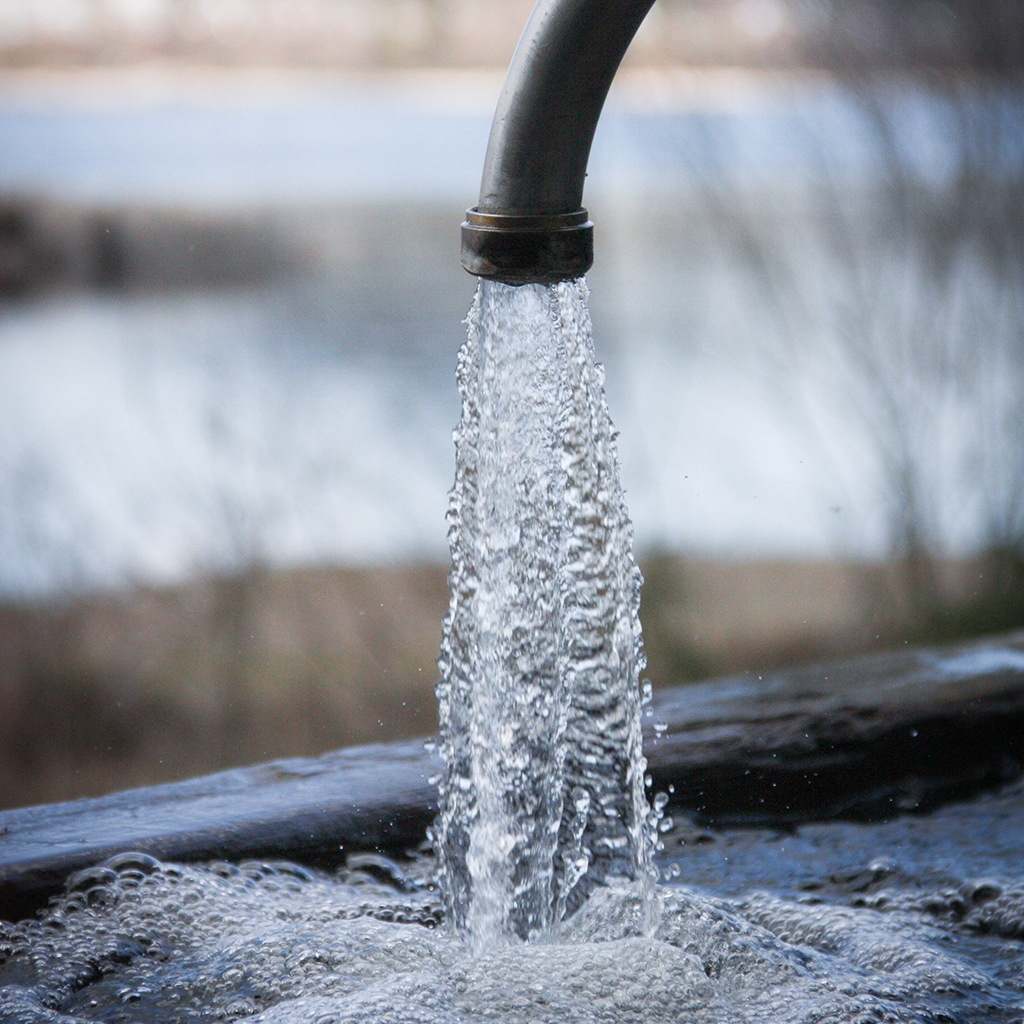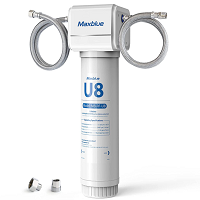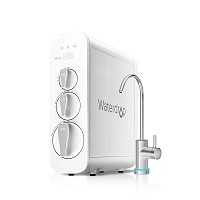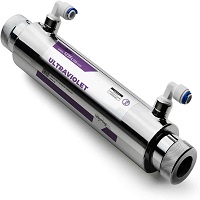How do Water Filters Operate & Why Does it Matter?
Water filtration is one of the most misunderstood topics, which is especially odd considering how crucial water is to supporting life. The truth is, water is the most essential elements to human existence, and it's unfortunate to learn how much time individuals put into researching forms of entertainment over water. People tend to “solve” this issue by purchasing bottled water, instead, which only serves to add stress to the environment. Additionally, the plastic that goes into manufacturing plastic bottles, as well as the heat it's exposed to during bottling or transportation, are far from safe. Unfortunately, over 500 million households across the globe opt for bottled water over tap on a daily basis.
How would you feel knowing there is a safer, more affordable method in which your entire household could receive a steady flow of healthy drinking water? A water filter can provide the water you have been searching for, at a fraction of the price of bottled water. If you are searching for more information on why water filters are beneficial, look no further. Here, we will go through the details behind why filtration is worth the investment, and how you can find the best method of water filtration for your household.
Is Tap Water Safe to Consume?
More often than not, people stick their noses up at the term “tap water”. Unfortunately, there are a whole plethora of negative connotations associated with municipal water sources for consumption. However, not so long ago, the majority of houses worldwide were totally dependent upon local wells for water collection. Carting water home was not only inconvenient, it was time consuming and heavy, requiring strength and endurance to complete. Tap water was a game changer, providing homes with near instant delivery of drinkable water without the work. The added convenience, and improved safety, took tap water right to the top.
In the last 40 years, though, nearly half of the population has replaced tap water and it's convenience, for the ease of bottled water. Essentially, people have reverted back to toting water back and forth, from the store to the homestead – how bizarre! It's even more mind boggling when you consider that, over this period of time, the quality and safety of tap water across the United States and Europe has only improved. The situation is further worsened by the undeniable fact that bottled water runs up to 1000 times more expensive than tap water. In addition to expelling more effort, paying more money, homeowners are also purchasing lower quality water when they buy bottled.
If Tap is Amazing, Why Purchase a Water Filter?
In countries such as the United States and Canada, tap water is generally considered safe for human consumption. An unfortunate myth continues to circulate, furthering the misinformation that tap water is unsafe to consume. To be honest, this is solely dependent upon local municipal water facilities, as well as the mechanical filtration and chemical methods they employ. In most communities, tap water has undergone extensive treatment and filtration far before it arrived in your sink.
Safety aside, homeowners may face confusion when considering water filtration. However, it's important to note that water filters serve an important purpose – they're not for hypochondriacs here. When tap water goes through filtration and treatment at a water treatment plant, it takes on the chemicals intended to kill dangerous microbes and bacteria found in water. Additionally, water may travel through corroded, old piping, which tends to deposit sediments and shavings along the way. With that in mind, it's easy to see how a simple water filter can improve the overall flavor and quality of tap water, a last line of defense, if you will.
What Common Issues do Tap Water Face?
When you live in a developed part of the world, it's easy to take modern conveniences, such as treated tap water, for granted. The fact of the matter is, most of the water sources around the world are not safe to drink from directly, even if they flow to the tap. Issues such as the mismanagement of agricultural, industrial, and even urban wastewater have led to the pollution of drinking water. In turn, this negatively affects the water for millions of people. These dangerous contaminants include:
- Pesticides & Herbicides
These elements may arise from contributions of agriculture, residential areas, and runoff.
- Microbial Contaminants
Sewage treatment plants, septic systems, wildlife, and livestock all contribute to the contamination of bacteria and viruses commonly present in tap water.
- Inorganic Contaminants
Salts and metals may occur naturally, or as the result of runoff, oil and gas production, farming, and industrial or domestic wastewater discharges.
- Organic Chemical Contaminants
Various byproducts of industrial processes or petroleum production, deposit both synthetic and volatile organic chemicals into water sources.
- Radioactive Contaminants
This is produced as a byproduct of the oil and gas industry, in addition to mining, but also can be a naturally occurring event.

Is My Tap Water Safe to Consume?
Typically, there is a set of standards created by both government and international standards. These constitute minimum, and maximum acceptable limits for contaminants, especially when water is intended for human consumption. If you are concerned about your tap water, simply submit a query to the water supplier asking for a recent water quality report. Large water utility companies conduct thousands of these quality reports annually, and make them available to the public. Should you want to conduct a DIY water test of your own, you are left with two options.
- Self Test Kits
Simply utilize the included test strips to check for pesticides, chlorine, lead, bacteria, nitrites and nitrates, hardness, and pH.
- Water Labs
Take a sample of your tap water, and submit it to a water lab for a detailed report. They will return an analysis of content, detailing everything you need to make an informed decision.
Who Needs a Water Filter?
Many individuals are concerned with the removal of contaminants from the water they drink, and bathe in. There are a wide range of materials and methods used in which tap water may be filtered into a healthy, safe alternative to bottled water. Regardless of where you currently reside, there may be several contributing factors as to whether or not you need to utilize a water filter. Regardless, let's look at how water filtration works, and who should be utilizing it.
Water purification removes undesirable chemicals, suspended solids, gases, and biological contaminants from water. The idea behind water purification is the produce water that is processed enough to be safe for drinking. Depending on the unit, they may employ a variety of methods of filtration, such as sand filters, distillation, sedimentation, active carbon, and much more. This means that once the undesirable contaminants are removed, the water is safe to consume. But how do these methods work?
As one of the most commonly utilized forms of filtration, and for good reason, activated carbon is effective against at least 70 common contaminants. Activated carbon also allows healthy minerals to remain, which makes it an excellent option for water filtration.
Also referred to RO, reverse osmosis is efficient at removing the same amount of contaminants as activated carbon. The unfortunate downside to RO is that it also removes healthy minerals, which can be dangerous for long term consumption.
Distillation
One of the oldest methods of water purification, distillation begins by boiling water. Water vapor rises to a condenser to cool, in order to allow the vapor to be condensed and collected before it's stored. Typically speaking, distilled water doesn't taste as good as other methods, and contaminants tend to remain in the liquid phase vessel.
Ion Exchange
Also referred to as IX, ion exchange is effective at lowering water hardness, and reducing scale. Water scale can build up in appliances and piping, even coffee makers, eventually rendering water heaters useless, etc. The method of IX utilizes ionic charge to remove various substances, while also allowing minerals to remain.
Ultraviolet Light
A UV filter is effective at removing up to 99.9% of all dangerous microorganisms found in water. The downside to this type of water purification, is that it is incapable of removing other common contaminants, unless it is combined with activated carbon, or another form of purification.
Why is Activated Carbon so Popular?
Activated carbon is available in many forms, including coconut shells, coal, and wood, with coconut shells being the most common. The way it works is by taking unfiltered water in through pressure, before many spherical particles begin to retain contaminants. Essentially, these contaminants get stuck on the surface of said particles, a phenomenon known as Adsorption. Unfortunately, the downside to activated carbon on it's own for filtration comes down to the overall side of the contaminant. Filtration is based on size and, with a particle size of 2 microns, some bacteria is allowed to pass through. This further highlights the important fact of using filtration with subsequent stages.
The Practice of Regular Filter Maintenance
Considering the nature of even an activated carbon filter, it is clear as to why changing filter cartridges regularly is an important practice. If you aren't committed to regular maintenance, a filter system isn't even worth the initial purchase. New filters prevent the growth of bacteria, clogs, and loss of effectiveness. By simply adhering to the manufacturer's suggested schedule, you can avoid damage to appliances, piping, and more.
In Conclusion
The quality of your drinking water will depend on your geographical location, as well as the treatment and filtration methods set forth by your local water treatment facility. Bottled water should not even be considered as an alternative to natural water sources, especially with concerns to environmental impact. Water filters serve as a great solution in the improvement of overall tap water flavor, and removal of contaminants. If you enjoy access to healthy, safe drinking water, turning to a form of water purification such as a water filtration system is a no brainer.






